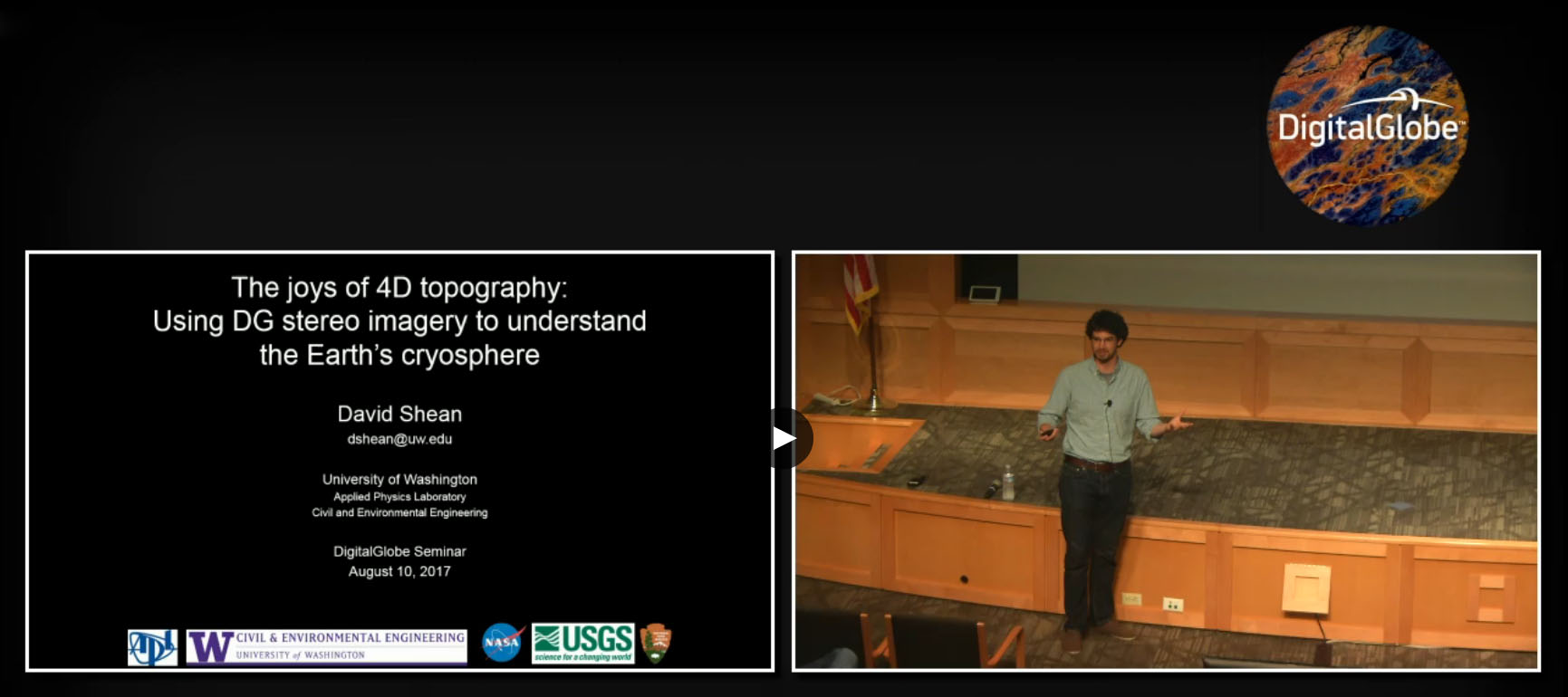The joys of 4D topography: Using DG stereo imagery to understand the Earth’s cryosphere
Abstract
The recent widespread availability of sub-meter (~30–50 cm) commercial satellite imagery has revolutionized multiple geoscience and engineering disciplines. We developed an automated, open-source workflow to generate 2-m digital elevation models (DEMs) from DG stereo imagery with <0.5 m horizontal and vertical accuracy after co-registration. We are producing 1000s of these DEMs in a high-performance computing environment, and assembling dense time series and regional mosaics for Antarctica, Greenland, the Contiguous US (CONUS), and High Mountain Asia (HMA). In Antarctica, these DEMs document the evolution of ocean-induced basal melt rates beneath vulnerable ice shelves, which can be used to improve ice flow models needed to constrain estimates of future sea level rise. In Greenland, time series with >200 DEMs offer an unprecedented look at the evolution and discharge rates for the ice sheet’s most dynamic outlet glaciers. For CONUS and HMA, we are integrating these DEM products with historical DEMs, airborne LiDAR data, and Structure from Motion (SfM) data to study the long-term (~50-year), decadal, annual, and seasonal mass balance of mountain glaciers on a regional to continental scale. These efforts provide a systematic assessment of regional climate change, and offer basin-scale assessments of snow water equivalent (SWE) and snow/ice melt runoff contributions for downstream water resource applications (e.g., hydropower, irrigation, municipal use). Finally, these observations offer measurements of dynamic landscape evolution (e.g., landslides) that can be used for both hazard assessment and rapid response to natural disasters. The sub-meter commercial stereo image archive spans nearly 10 years, and ongoing scientific data acquisition efforts have expanded dramatically since ~2013. These resources offer a nearly global, on-demand, low-cost capability that approaches the quality of airborne LiDAR data, and they will undoubtedly be an essential component of future Earth-observing research programs.
